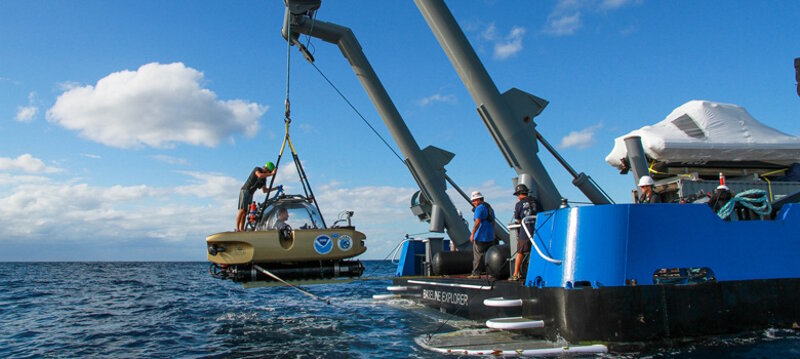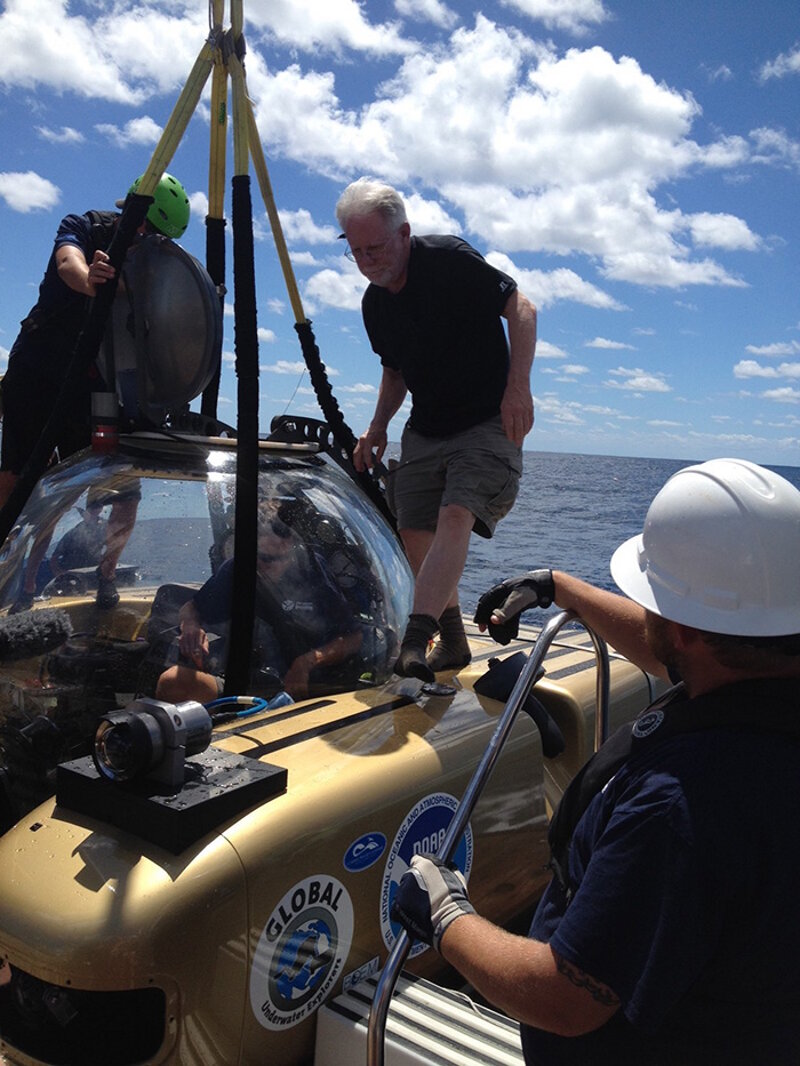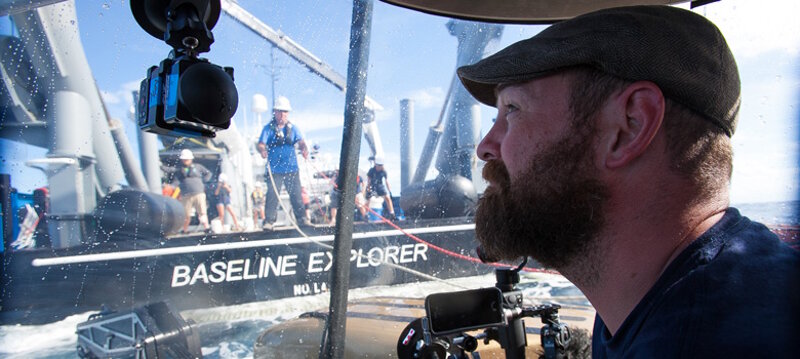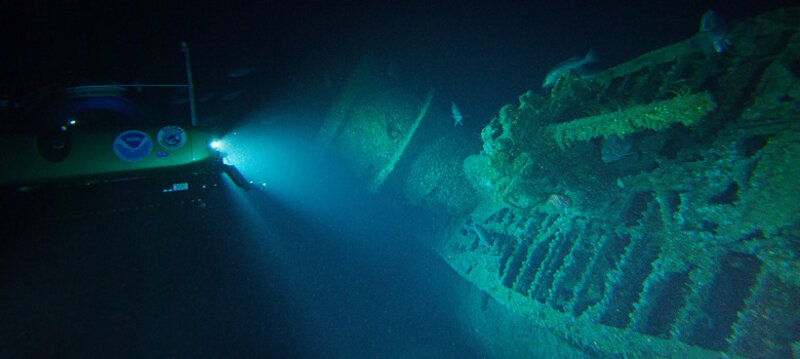
By Reed Bohne, Northeast and Great Lakes Regional Director - Office of National Marine Sanctuaries
August 27, 2016

The manned submersible is being lifted out of water after its dive to the U-576 and Bluefields wreck sites. Image courtesy of David Sybert, UNC Coastal Studies Institute – Battle of the Atlantic expedition. Download larger version (jpg, 2.3 MB).
Calm seas greeted us on August 25, as we prepared to cruise offshore the Outer Banks and back in time. This expedition to the naval battlefields of World War II has the emotional impact of walking the beach of Normandy. Relics of cliff top emplacements along the French coast are echoed by the silent and deep combatants of that era lying nearly side by side over 700 feet below the surface.

Mike Ruane, Washington Post staff writer, enters the manned submersible for a dive to the wreck sites. Image courtesy of Reed Bohne, Office of Marine National Sanctuaries – Battle of the Atlantic expedition. Download larger version (jpg, 515 KB).
On August 25, we launched the second set of submersible dives to U-576 and the Bluefields, to continue detailed laser line mapping of the wrecks.

Joe Hoyt, Monitor marine archeologist, onboard the manned submersible. Image courtesy of Robert Carmichael, Project Baseline – Battle of the Atlantic expedition. Download larger version (jpg, 1.8 MB).
Mike Ruane, staff writer for the Washington Post, joined the expedition for the day and dove onboard a manned submersible to the U-boat. He found it remarkable and fascinating: "There are so many pieces to this story: the expedition, the history of the boats and crew, and the physical aspect of setting your eyes on the direct object of another time and era. The bottom is smooth and vacant, there's nothing down there and then it looms out of the gloom at you, this big black oblong shape slowly emerging out of the murky depths." Mike has been a reporter for 50 years, and we were proud to have him join us.

A submersible shines its lights on the wreck of U-576 lying on its starboard side, showing the submarine's conning tower and the deck gun in the foreground. Image courtesy of Ed Caram Collection. [Bottom photo] A submersible shines its lights on the wreck of U-576 lying on its starboard side, showing the submarine's conning tower and the deck gun in the foreground. Image courtesy of John McCord, UNC Coastal Studies Institute – Battle of the Atlantic expedition. Download larger version (jpg, 3.7 MB).
Joe Hoyt, Monitor marine archaeologist, is the chief scientist on this expedition. Joe took the first sub dive on the wrecks on August 24 and was the first to see the vessels since they went down in 1942. He was awestruck and humbled: "We've been studying these stories for a number of years, looking at black and white images of the crew on deck, and in some ways it feels almost like fiction. But suddenly being there, seeing the conning tower and instruments we knew from the photographs and knowing the crew of 45 lie within, it freezes your mind in the moment and silences the technology around you as you traverse the submerged war graves of the conflict so close to our shores."
As we look to the expansion of the Monitor National Marine Sanctuary to include this portion of the Graveyard of the Atlantic, it reinforces for us the importance of preserving and protecting the irreplaceable heritage both natural and cultural that lies off our coast.